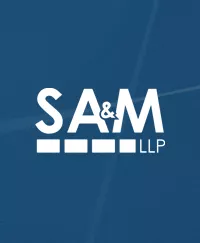This article was originally published on June 4, 2020 and was most recently updated on June 17, 2020.
On June 5, 2020, President Trump signed the Paycheck Protection Program Flexibility Act (the “Act”) into effect, giving more time and flexibility to employers who receive or have received forgivable loans under the Small Business Administration’s (“SBA”) Paycheck Protection Program (“PPP”). On June 11, 12, and 17, 2020, the Department of Treasury , in consultation with the SBA, issued interim rules providing further guidance on how the changes from the Act will be implemented. Also on June 17, 2020, the SBA posted a revised, borrower-friendly PPP loan forgiveness application implementing the Act, as well as a simplified forgiveness application that applies to certain borrowers.
New loan forgiveness applications
The revised PPP loan forgiveness application and related instructions implement the Act’s changes to the PPP, discussed in more detail below. Additionally, a newly introduced and simplified or “EZ” loan forgiveness application applies to borrowers that:
- Are self-employed and have no employees; OR
- Did not reduce the salaries or wages of their employees by more than 25%, and did not reduce the number or hours of their employees; OR
- Experienced reductions in business activity as a result of health directives related to COVID-19 and did not reduce the salaries or wages of their employees by more than 25%.
The EZ application requires fewer calculations and less documentation for eligible borrowers. Instructions to the new EZ application form provide additional details on its use, which define key terms, walk borrowers through the forgiveness calculations, outline eligible and non-eligible costs, and list documents that must be submitted, and retained but not submitted, in connection with the application.
Both the revised loan forgiveness application and the new EZ application give borrowers the option of using the original 8-week covered period for calculating forgiveness (if their loan was made before June 5, 2020) or a 24-week covered period.
Period to receive loans extended
The Act extends the period that eligible applicants may receive and spend PPP loans. The CARES Act initially defined this period as February 15, 2020 to June 30, 2020. Under the Act, PPP loans will now remain available and may be used on specified categories of borrowers’ expenses through at least December 31, 2020. (For a detailed discussion on the permitted uses of PPP loans, see our prior post.)
Period eligible for loan forgiveness extended
Perhaps more importantly, the Act also extends the time PPP recipients have to spend their funds and still be entitled to receive loan forgiveness from eight weeks after disbursement, to the earlier of 24 weeks or December 31, 2020. This change shall be effective as if included in the CARES Act, which means that it is retroactive to March 27, 2020. However, borrowers that have received their loans prior to the Act’s enactment may still elect to use their funds over the original 8-week period and the related obligation to maintain payroll levels only through June 30, 2020. Borrowers using this new loan forgiveness covered period will be obligated to maintain payroll levels for an extra 16 weeks.
Exemption for reduced forgiveness amounts
Relatedly, the Act creates a new forgiveness exemption based on employee availability during the period from February 15, 2020 through December 31, 2020. Under this provision, loan forgiveness will be determined without regard to a proportional reduction in the number of full-time equivalent employees if a borrower documents in good faith both the inability to rehire individuals who were employees on February 15, 2020 and the inability to hire similarly qualified employees for unfilled positions on or before December 31, 2020. This exemption also extends to borrowers whom in good faith are able to document the inability to return to the same level of business activity at which the borrower operated on or before February 15, 2020, due to compliance with regulatory standards for sanitation, social distancing, or any other worker or customer safety requirement related to COVID-19 and promulgated between March 1, 2020 and December 31, 2020 (the Act specifically identifies guidance issued by Department of Health and Human Services, the Centers for Disease Control and Prevention, and the Occupational Safety and Health Administration).
75/25 rule now 60/40
Another significant provision from the Act lowers the portion of PPP funds borrowers must spend on payroll costs to qualify for full loan forgiveness from 75% to 60%. This means that 40% of the loan may now be spent on covered non-payroll costs (i.e., rent, mortgage interest and utilities), as opposed to the prior 25% requirement.
Given the way the Act is drafted, if a borrower did not spend 60% of funds on payroll costs during the applicable covered period (even if this amount was 59.9%) it was unclear if said borrower would be eligible for any loan forgiveness. However, the June 11 interim rule clarifies that a borrower’s failure to meet this new limit will result in a proportional reduction to forgiveness amounts, rather than serve as a threshold to receive any forgiveness.
Deferral period extended
For borrowers that apply for forgiveness within 10 months of the last day of the loan forgiveness covered period, the Act replaces the 6-month loan payment deferral period with the date on which the amount of forgiveness determined is remitted to the lender. For borrowers that fail to apply for forgiveness within 10 months of the last day of the loan forgiveness period, such recipients shall begin making payments of principal, interest, and fees at that time. Like the extension of the covered period for forgiveness purposes, this change shall also be effective as if included in the CARES Act and thus retroactive to March 27, 2020.
New minimum maturity date
Further, the Act also creates a new five-year minimum maturity date (measured from the date the borrower applies for loan forgiveness) that is applicable only to PPP loans made on or after June 5, 2020 (i.e. post-enactment). For loans made before June 5, 2020, the maturity date is two years; however, the Act allows lenders and pre-enactment borrowers to mutually agree on modifying the maturity terms to conform with this change.
Adjustment to delay of employer payroll taxes
Lastly, the Act now permits borrowers whose loans were forgiven in whole or in part to delay the payment of employer payroll taxes until December 31, 2021 (with respect to up to 50% of the amounts due) and December 31, 2022 (with respect to the remaining amounts due up to 50%). Borrowers who received forgiveness were previously prohibited from taking advantage of this benefit.
We will continue to closely monitor developments regarding these matters. You can view prior alerts and additional guidance regarding COVID-19-related matters at our resource center.
For more information on these matters, please contact our COVID-19 Task Force at or one of our attorneys at SA&M.

